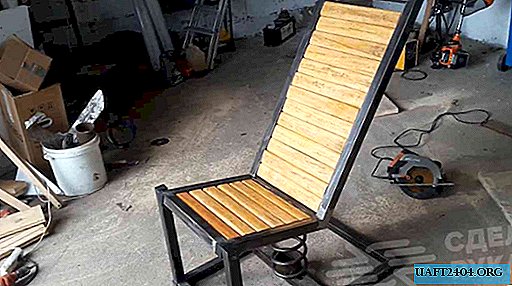Share
Pin
Tweet
Send
Share
Send

There is nothing more comfortable on a cold autumn or winter evening than warm socks. After all, if the legs are warm, then the chilliness recedes.
Classic socks are knitted on 5 knitting needles with a viscous front. Almost all socks are knitted that way. To knit socks, a tool such as a hook is not often used. It will be even more interesting to introduce readers to this method of making woolen socks. In addition, several copyright secrets will be revealed, which are used in order to get thick and warm socks.

For knitting, we choose two types of yarn: one acrylic rather thin thread, the second pure-wool also a thin thread. We will knit them in pairs. Acrylic will give strength to the product, wool - the body and the necessary density.
Depending on the obtained thickness of the double thread, select the hook. Knitting should be tight enough.
Crochet a sock begins, unlike knitting with a toe. Another useful experience: it is worth knitting two socks at once, especially if you do not calculate the loops and do not make a knitting pattern, so they turn out faster and symmetry is respected.


We start knitting with an amigurumi loop. This is a special eyelet that allows you to get a tight circle from the very beginning so that there is no gap at the very beginning of knitting. It is called so, because this technique was invented for knitting amigurumi toys. We start work with a loop around the index finger, which we tie around in a circle with ordinary single crochet columns in the amount of 6 pieces, and then, remove the loop from the finger and pull the ring around the free end so that all the loops are closed. For a more detailed study, you can find a video with a lesson in knitting amigurumi rings.

Then we continue knitting in a circle, evenly adding loops, until we get a circle to form a toe of the desired diameter.
Indicative measurements for our knitting method: for size 36-38, the circle should be 7-8 cm in diameter, for size 39-41, the diameter should be 8-9 cm, etc.




After that, we stop adding loops and continue knitting in a circle, thus knitting out the part of the toe from the toe to the heel. Try on a sock. We knit taking into account the fact that the sock should turn out to be too big no less than by size.



We knit the heel. First, the lower part of the heel is knitted with a straight cloth of double crochet or single crochet if a denser texture is needed. The width of the heel web is equal to the width of the toe, i.e. half toe circumference loops. The height of the heel web is half its length, i.e. folding it in half we get a square. The last row of the heel web should go in the direction of the general scheme, i.e. knitting should continue on the outside of the product.

Next, we return to circular knitting. We tie the heel to the angle of connection with the toe. We knit three loops in the corner with elongated columns, which are performed as follows: the working thread is stretched through the lower loop, and then a double crochet is crocheted.



This technique is used on both sides of the heel. In this way, the connection of the calcaneus with the toe of the sock is filled. When the connection angle is filled, evenly around the circumference, reduce the loops until their number matches the number of loops of the toe. Next, continue knitting in a circle to the desired height of the sock.


We complete the knitting of the sock with a serrated edge. Rapport of the binding: * in one loop of the lower row 3 tbsp. With a crochet, 3 vp., 3 tbsp. With a crochet, skip 2 loops of the lower row *.


After completing knitting, we get two identical socks a little larger than we need.


The next step is washing in hot water. Without hesitation, you can wash in a washing machine at a temperature of 60 ° C, or boil socks in a container of water on the stove for 15-20 minutes. Dip in cold water, then remove, shape and leave to dry straightened. Naturally, with this heat treatment, the socks will “shrink” and get the right size, while they will not be loose with a uniform, one-piece viscous.


As a result, the socks are dense, fluffy and very warm. Carry and give with pleasure.

Share
Pin
Tweet
Send
Share
Send











